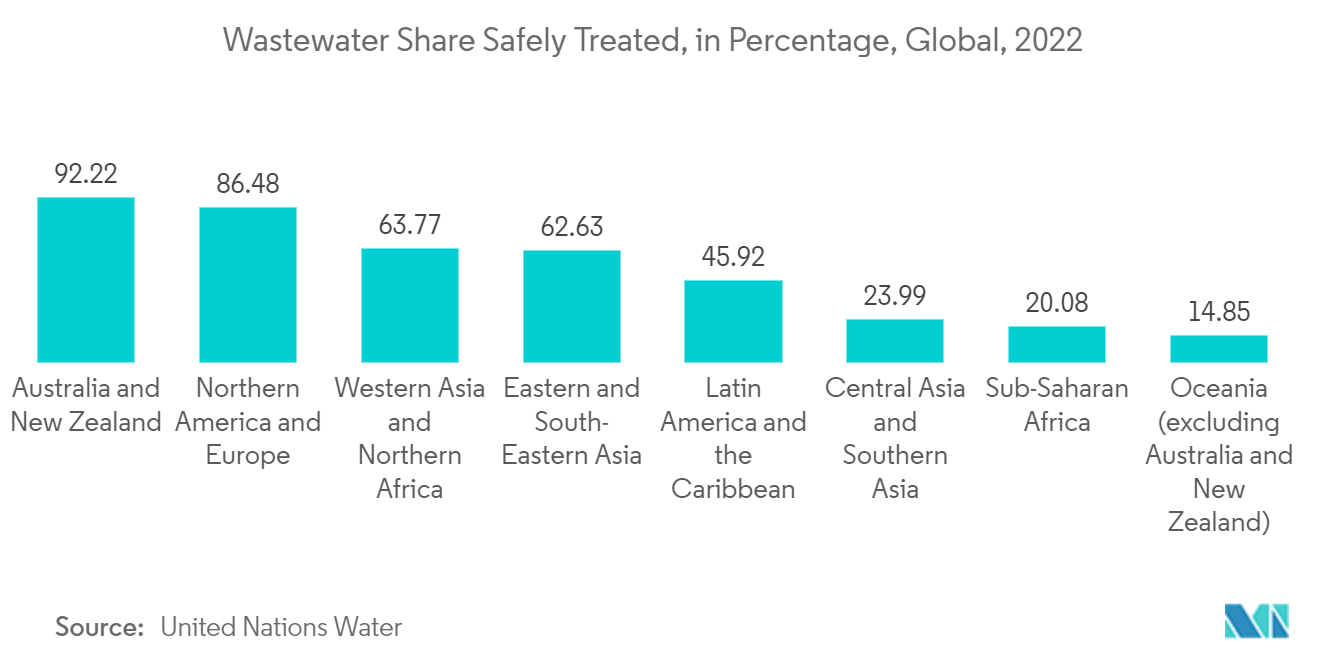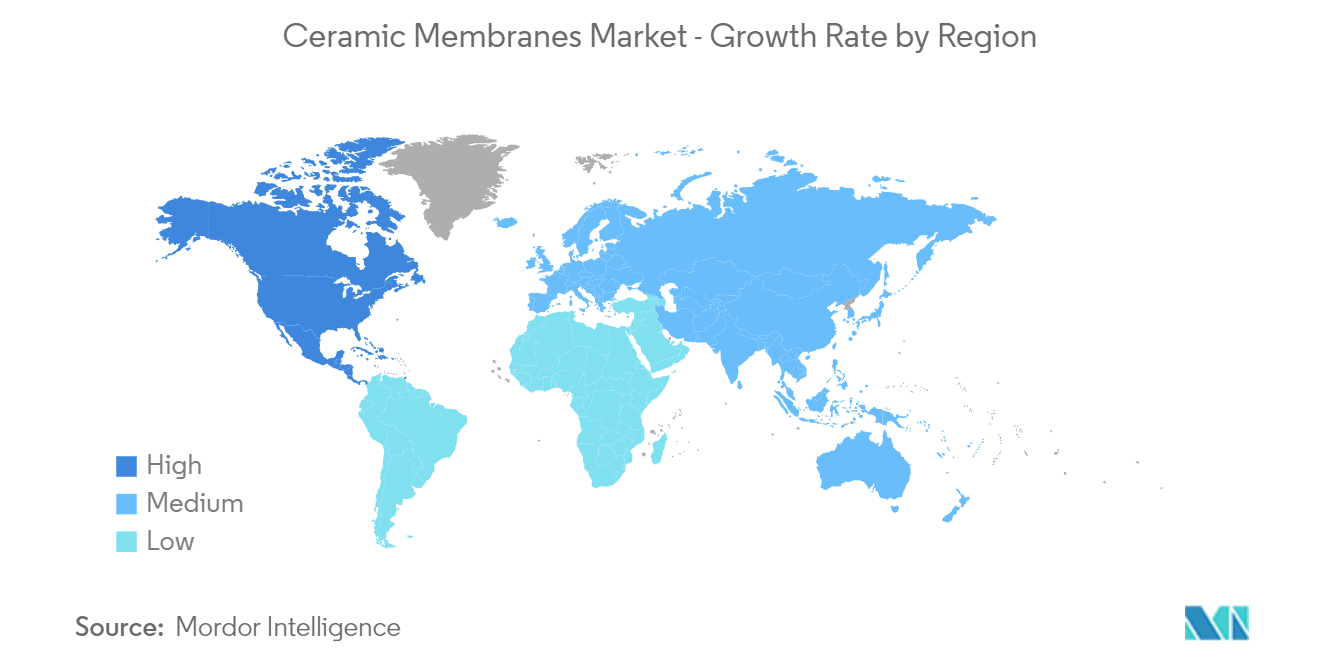Market Trends of Ceramic Membranes Industry
Water and Wastewater Treatment Segment to Dominate the Market
- Ceramic membranes are commonly used in water and wastewater treatment due to their superiority over traditional water treatment technologies. They possess excellent chemical stability, high mechanical strength, resistance to high temperatures, and strong antimicrobial properties, among other benefits. Additionally, they exhibit good antibacterial effects, making them highly effective in water treatment processes.
- Volumes of wastewater are increasing due to population growth, improved water supply, enhanced living standards, and economic growth.
- Every year, the world generates 380 billion cubic meters of wastewater, and it is expected to increase by 24% and 51% by 2030 and 2050 respectively.
- According to the United Nations Water, high-income countries treat approximately 70% of the wastewater they produce. In contrast, upper-middle-income countries treat only 38%, while lower-middle-income countries treat only 28%. In low-income countries, the proportion of wastewater treated is as low as 8%.
- According to United Nations Water, while 86.5% of household wastewater flow is treated safely in North America and Europe, less than 25% is treated safely in Sub-Saharan Africa and Central and Southern Asia.
- Moreover, according to a new study by the United Nations University, only about half of global wastewater is treated, which is a significant increase from the previous estimate of 20%.
- China is facing a severe water shortage, as it has just 7% of the world's fresh water but 20% of its population. To address this issue, the country has announced plans to build 20 million cubic meters per day of wastewater treatment capacity over the next five years. This move is expected to increase the demand for ceramic membranes.
- The South Korean government has introduced the Water Environment Management Master Plan of 2016-2025 to maintain the high quality of 85% of the water across the country. This initiative is expected to boost the water treatment activities in South Korea. Currently, there are around 698 sewage treatment facilities in the country.
- The German water treatment market is the largest in Europe, with a primary focus on the country's northern region. The private households, industry, and trade sectors generate over five billion cubic meters of sewage water annually.
- Germany has the largest industrial wastewater treatment market in Europe, with almost 3,000 treatment plants serving approximately 12,000 discharging companies. Every year, around 920 million cubic meters of industrial wastewater are treated in the country before being discharged into the environment. Moreover, nearly 99% of the people in Germany can directly access wastewater treatment plants, according to the Federal Ministry.
- The United Kingdom has over 7,000 sewage treatment plants and 98% of households have access to sewerage service.
- Thus, all the factors mentioned above are likely to increase the demand for ceramic membranes in the forecast period.

North America Region to Dominate the Market
- The North American region is the largest market for ceramic membranes mainly due to the large consumption from pharmaceuticals, food and beverage, water and wastewater treatment, and other industries.
- The United States has around 153,000 public drinking water systems and over 16,000 publicly owned wastewater treatment systems. More than 80% of the population in the United States receives clean and potable water from these drinking water systems, while approximately 75% of the population has their sanitary sewage treated by these wastewater systems.
- Mexico has a vast network of water treatment plants, including 874 potable water treatment plants, 2,639 wastewater treatment plants, and 435 desalination plants. This makes Mexico the manufacturing hub of the North American region.
- The ceramic membrane is widely used in food and beverage processing for separation, clarification, and purification due to its high separation efficiency and chemical stability.
- In addition, during the winemaking process, ceramic membrane technology can be used to clarify, sterilize, and stabilize wine. This technology helps to maintain the flavor of the wine while simplifying and reducing costs in the winemaking process.
- According to the International Organisation of Vine and Wine (OIV), the United States produced 8.7% of the world's wine in 2022.
- All the factors above are expected to enhance the demand for ceramic membranes during the forecast period.

